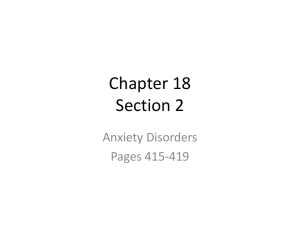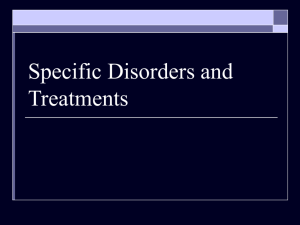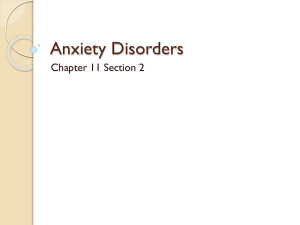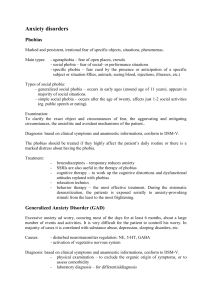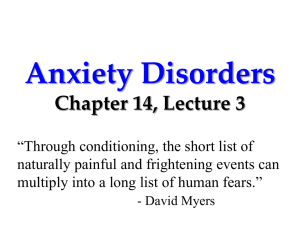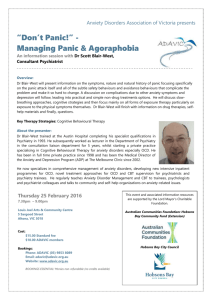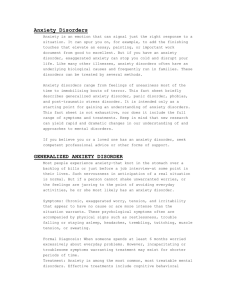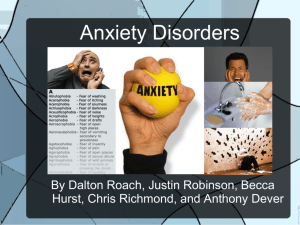File
advertisement
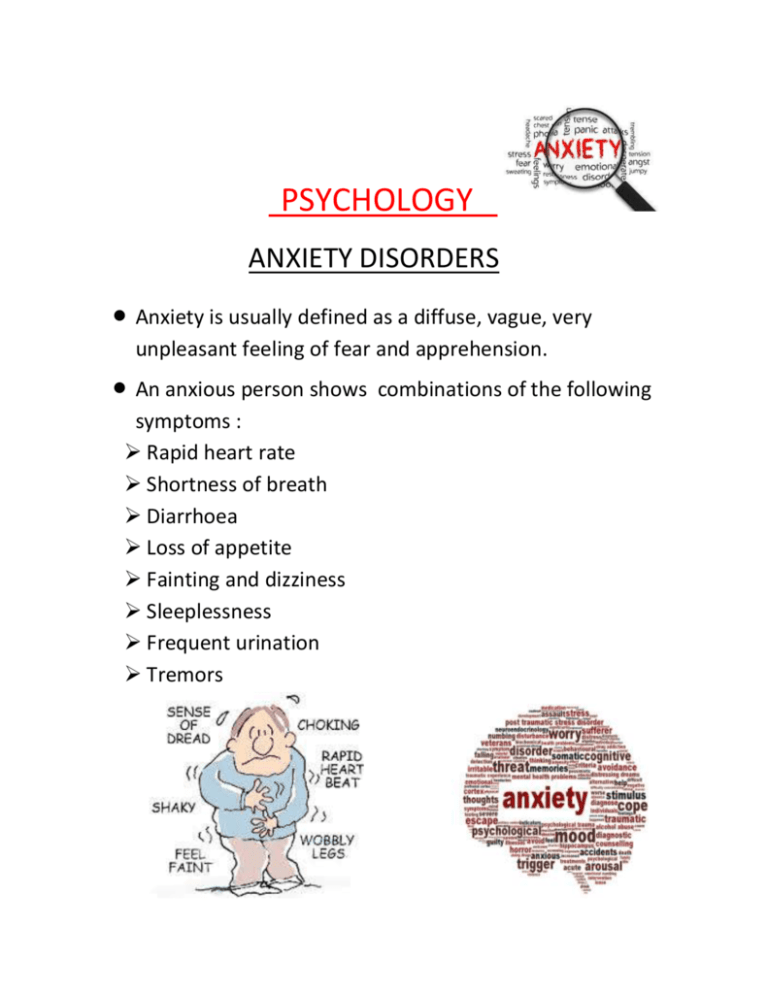
PSYCHOLOGY ANXIETY DISORDERS Anxiety is usually defined as a diffuse, vague, very unpleasant feeling of fear and apprehension. An anxious person shows symptoms : Rapid heart rate Shortness of breath Diarrhoea Loss of appetite Fainting and dizziness Sleeplessness Frequent urination Tremors combinations of the following Anxiety disorders include:Generalised anxiety disorder: It consists of prolonged,vague,unexplained and intense fears that are not attached to any particular object. Symptoms include worry and apprehensive feelings about the future ,hypervigilance,which includes constantly scanning the environment for dangers.It is marked by motor tension ,as a result of which the person is unable to relax ,is restless and visibly shaky and tense. Panic disorders: It consists of recurrent anxiety attacks in which the person experiences intense terror. A panic attack denotes an abrupt surge of intense anxiety rising to a peak when thoughts of a particular stimuli are present. Clinical features incude :shortness of breath,dizziness,trembling, palpitations,choking,nausea,chest pain or discomfort,fear of going crazy,losing control or dying. Phobias: Phobias can be classified into 3 main types Specific phobias Social phobias Agoraphobia Specific phobias include irrational fears such as intense fear of certain type of animal, or of being in an enclosed space. Intense and incapacitating fear and embarrassment when dealing with others characterises social phobias. Agoraphobia is the term used when people develop a fear of entering unfamiliar situations. In Obsessive-compulsive disorder they are unable to control their preoccupation with specific ideas or are unable to prevent themselves from repeatedly carrying out a particular act or series of acts that affect their ability to carry out normal activities . Obsessive behaviour is the inability to stop thinking about a particular idea or topic . Compulsive behavour is the need to perform certain behaviours over and over again.Many compulsions deal with counting,ordering,checking,touching and washing. Post-traumatic stress disorder (PTSD)are seen in people who are caught in a natural disaster or have been victms of bomb blasts by terrorists or been in a serious accident or in a war-related situaton. PTSD symptoms include : recurrent dreams, flashbacks,impaired concentration and emotional numbing. Sample questions Q1 . Helen seldom leaves her home. She works out of her home office, has friends visit her at home and has most things delivered to her at home too. The idea of going to movies, a public park or eating out scares her. Such symptoms are typical of:a) Obsessive compulsive Disorder b) Agoraphobia c) Social Phobia d) Panic Disorder Q2. .What are anxiety disorders? Explain the various types of these disorders Q3. Ritu’s son works in a call centre. In spite of knowing his odd hours of returning, she continues to have prolonged, vague and intense fear, accompanied by hyper vigilance, showing a kind of anxiety. Identify the type of anxiety she is suffering from? Q4. Describe obsessive-compulsive disorder. Q5. What are specific phobias? Q6. State major types of anxiety disorders. Explain obsessive-compulsive disorders with examples. Q7.What are PTSD ? What are its causes and symptoms ?

